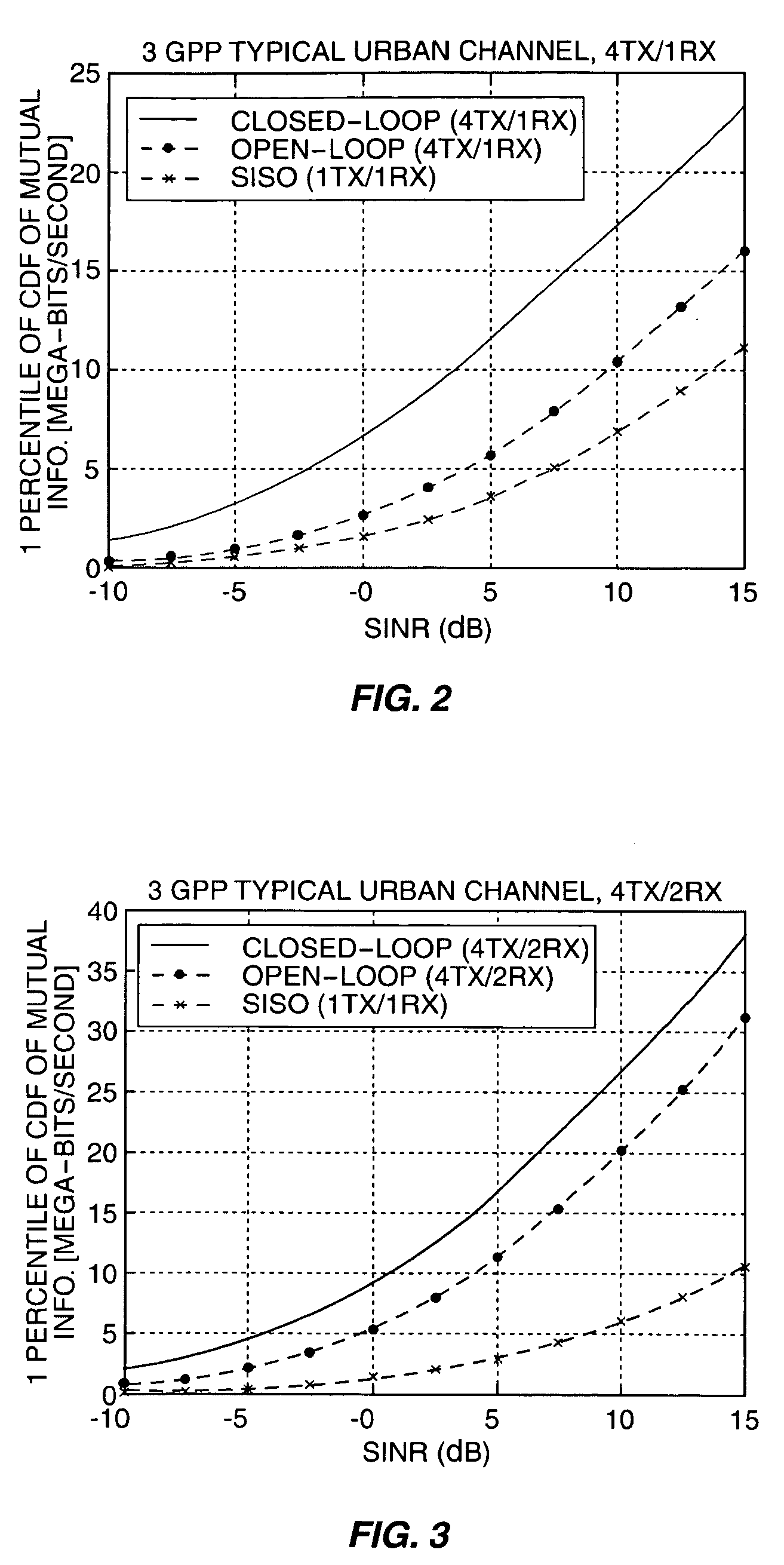Adaptive MIMO architecture
a technology of mimo and transmission scheme, applied in the field of multiantenna transmission scheme for wireless communication network, can solve the problems of limited peak rate improvement, increased complexity of transmitter and receiver, and limited information concerning the communication channel being fed back from the receiver
- Summary
- Abstract
- Description
- Claims
- Application Information
AI Technical Summary
Benefits of technology
Problems solved by technology
Method used
Image
Examples
Embodiment Construction
[0013]FIG. 1 illustrates a multiple input / multiple output (MIMO) wireless communication system 10 including a first station 20 and a second station 30. The first station 20 includes a transmitter 22 for transmitting signals to the second station 30, while the second station includes a receiver 32 for receiving signals transmitted by the first station 20. Those skilled in the art will appreciate that the first station 20 and second station 30 may each include both a transmitter 22 and receiver 32 as shown in FIG. 1 for bi-directional communications. In one exemplary embodiment, the first station 20 is a base station in a wireless communication network, and the second station 30 is mobile station.
[0014] An information signal in the form of a binary data stream is input to the transmitter 22 at the first station 20. The transmitter includes a controller 24, a transmit signal processing circuit 26, and a plurality of transmit antennas 28. The controller 24 controls operation of the tra...
PUM
 Login to View More
Login to View More Abstract
Description
Claims
Application Information
 Login to View More
Login to View More - R&D
- Intellectual Property
- Life Sciences
- Materials
- Tech Scout
- Unparalleled Data Quality
- Higher Quality Content
- 60% Fewer Hallucinations
Browse by: Latest US Patents, China's latest patents, Technical Efficacy Thesaurus, Application Domain, Technology Topic, Popular Technical Reports.
© 2025 PatSnap. All rights reserved.Legal|Privacy policy|Modern Slavery Act Transparency Statement|Sitemap|About US| Contact US: help@patsnap.com



